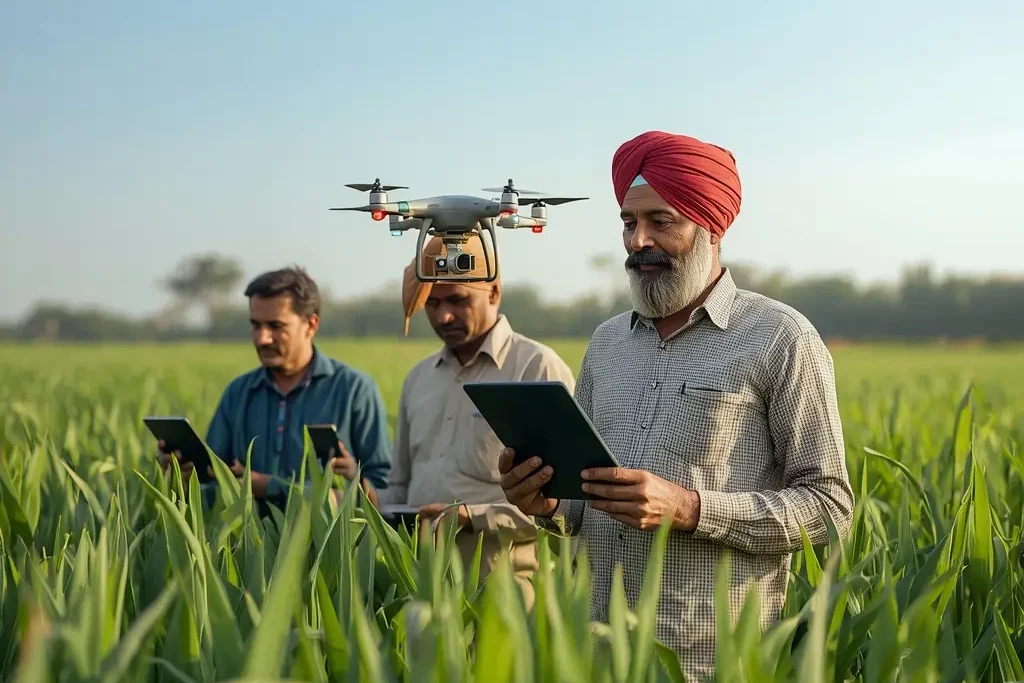Introduction to Agriculture’s Regulations
Agriculture isn’t truely an corporation in india — it’s a way of lifestyles. From the plush fields of Punjab to the paddy farms of Tamil Nadu, over half of of of of india’s population is based upon on farming for livelihood.
Yet, on the same time as india celebrates being one of the international’s largest meals manufacturers, the challenges managing farmers are growing.
Climate change , falling groundwater ranges, and uneven income distribution preserve to test the limits of the system.
That’s wherein india agriculture policies are to be had in. The ones suggestions shape what farmers increase, how they expand it, and the manner their difficult artwork will become countrywide improvement.
In this article, we’ll discover the most commonplace questions humans ask approximately agriculture in india — and what the answers tell us about wherein farming is headed.
What Are the Main Agriculture Policies in India?

On the coronary coronary coronary coronary heart of india’s farm device are severa essential regulations designed to keep agriculture strong and sustainable.
The National Agriculture Policy 2000 set out prolonged-term dreams for growth, that specialize in technology, diversification, and rural development. Later, the National Policy for Farmers 2007 elevated the focus from honestly crop yields to farmers’ income, marketplace get right of entry to, and properly-being.
The National Mission for Sustainable Agriculture (NMSA) is a few other key software. It encourages climate-resilient farming — selling soil fitness, water conservation, and the usage of renewable strength.
Those india agriculture policies purpose now not superb to amplify extra food however to do it in a manner that sustains each the land and the people who depend on it.
How do government farm schemes help indian farmers?
Policies end up real after they advantage the ground — and that’s wherein government farm schemes make a difference. The Pradhan Mantri Kisan Samman Nidhi (PM-KISAN) deposits ₹6,000 each 365 days into farmers’ monetary employer debts, providing direct profits assist to lots and thousands.
It’s smooth, apparent, and dependable — 3 topics farmers have normally needed.
Then there’s the Pradhan Mantri Fasal Bima Yojana (PMFBY), which protects farmers from crop loss because of unpredictable climate or pests.
Here’s a short and simple table 👇
| Scheme | Objective | Benefit to Farmers |
|---|---|---|
| PM-KISAN | Income support | ₹6,000 yearly to small farmers. |
| PMFBY | Crop insurance | Covers losses from weather or pests. |
| Soil Health Card | Soil testing | Improves fertilizer use and yield. |
| PMKSY | Water management | Promotes drip and sprinkler irrigation. |
| PKVY | Organic farming | Encourages chemical-free cultivation. |
| KUSUM | Solar power | Provides solar pumps for irrigation. |
| e-NAM | Digital market | Helps get fair prices online. |
For enhancing productiveness, the Soil Health Card Scheme allows farmers recognize nutrient tiers of their soil, even as the Paramparagat Krishi Vikas Yojana (PKVY) encourages herbal and sustainable farming practices.
Collectively, those government farm schemes help farmers manipulate dangers, decorate yields, and adopt sustainable techniques that gain each households and the environment.
What Are the Recent Agricultural Reforms in India?
In the last decade, the authorities has introduced a wave of agricultural reforms in india geared toward modernization. The Agri Infrastructure Fund (AIF) has recommended personal investment in storage, processing, and logistics.
The e-NAM (virtual country wide agriculture marketplace) platform connects farmers right now with customers, decreasing middlemen and improving fee transparency.
Technological change is likewise the use of reform. Farmers are actually using drones, AI-based crop analysis, and cell telephone apps for weather forecasts and pest signs and symptoms. However not all reforms have been smooth.
The farm felony suggestions proposed in 2020 sparked huge debates and protests, showing how critical it’s far for suggestions to align with the desires and keep in mind of small farmers.
The purpose of those agricultural reforms in india is obvious — to create an green, contemporary agricultural tool that rewards every productivity and sustainability.
How Do India’s Agriculture Policies Affect the Environment?

It’s not possible to talk approximately india agriculture policies with out addressing their environmental impact. For years, recommendations promoting rice and wheat cultivation helped india triumph over meals shortages, however similarly they contributed to groundwater depletion and soil exhaustion.
States like punjab and haryana in the in the meantime are suffering with declining water tables because of over-irrigation.
To counter this, the authorities is encouraging crop diversification — growing millets, pulses, and oilseeds that need a excellent deal plenty less water.
The National Mission for Sustainable Agriculture facilitates farmers who undertake climate-fantastic practices such as herbal manure use, green irrigation, and renewable electricity on farms.
| Policy Aspect | Environmental Impact |
|---|---|
| Subsidies on fertilizers | Causes soil degradation and water pollution. |
| Free electricity for irrigation | Leads to groundwater overuse and depletion. |
| MSP for water-intensive crops | Encourages rice and wheat overproduction, stressing water resources. |
| Crop diversification programs | Promotes sustainable farming and reduces water usage. |
| Organic farming initiatives | Improves soil health and lowers chemical pollution. |
| Water conservation schemes | Supports efficient irrigation and groundwater recharge. |
Whilst improvement is being made, the stableness among meals safety and environmental protection remains sensitive. Destiny india agriculture policies must focus on restoring soil health and water stability on the equal time as keeping farmers’ earning strong.
What Is the Role of Subsidies in Indian Agriculture?
Subsidies are the various most seen device of india agriculture policies. They assist farmers have enough cash fertilizers, energy, irrigation, and seeds. As an example, the Fertilizer Subsidy Scheme permits farmers to shop for inputs at lower charges, this is essential for preserving productiveness.
But, those subsidies include alternate-offs. Free power has endorsed groundwater overuse, and cheap fertilizers have occasionally brought about nutrient imbalance in the soil.
Specialists argue that agricultural reforms in india now desires “smart subsidies” — benefits that promote average overall performance in preference to waste.
The shift inside the direction of sustainable farming practices and generation-driven beneficial useful resource use will rely upon reforming subsidies to praise conservation, innovation, and weather-pleasant behavior.
How Does the Minimum Support Price (MSP) System Work?
The minimal manual rate (msp) is one of the cornerstones of india agriculture policies. It guarantees farmers a tough and speedy rate for his or her produce, regardless of the truth that marketplace fees drop.
Msp allows reduce the chance of loss, encouraging farmers to preserve generating critical food plant life.
The Commission for Agricultural Costs and Prices (CACP) recommends msps for 23 flowers based totally mostly on factors like enter rate, call for, and inflation. But, in workout, msp procurement mainly blessings farmers growing rice and wheat in satisfactory states.
To make msp fairer and extra powerful, there’s developing communicate of increasing it to extra plant life and improving digital procurement structures.
A obvious, available msp mechanism is important to ensuring the achievement of india agriculture policies in supporting each small and big-scale farmers.
What Steps Is India Taking for Sustainable Farming?

Sustainability is not non-obligatory — it’s the destiny of farming. The government has rolled out severa programs to promote sustainable farming practices.
The National Mission on Natural Farming (NMNF) focuses on 0-chemical agriculture, whilst the Pradhan Mantri Krishi Sinchai Yojana (PMKSY) promotes micro-irrigation and water overall performance.
Farmers also are advocated to use sun energy under the KUSUM Scheme , reducing dependence on diesel and electricity.
Many states are introducing programs for natural farming, composting, and incorporated pest manipulate.
With the useful resource of blending conventional know-how with modern-day technology, india is slowly shifting within the path of a model in which farming protects nature in location of depleting it.
The ones steps, even though gradual, reflect the evolving priorities inner india agriculture policies — from short-term output to prolonged-term resilience.
How Do Agriculture Policies Impact the Water Crisis in India?
Water crisis in agriculture is one in every of the most important demanding conditions for indian agriculture in recent times. Over eighty% of the united states of america’s freshwater is going into irrigation.
Because of water-in depth flora and inefficient irrigation techniques, regions like northwestern india face alarming groundwater depletion.
Spotting this, the authorities has made water control a pillar of its india agriculture policies.
The Atal Bhujal Yojana objectives to improve groundwater conservation, while the Jal Shakti Abhiyan encourages rainwater harvesting and watershed development.
Farmers are being advised to replace to tons plenty much less water-hungry flowers collectively with millets, which furthermore look like specifically nutritious.
Selling drip and sprinkler irrigation has proven notable effects, saving every water and fertilizer.
Going forward, india’s water crisis in agriculture can simplest be managed via guidelines that integrate technology, popularity, and strong nearby governance.
What Are the Major Challenges Facing Indian Agriculture Today?
However improvement, indian agriculture though faces more than one interconnected stressful conditions. Fragmented landholdings make mechanization difficult, whilst awful get proper of get admission to to to credit score limits funding.
Unpredictable weather styles, driven through climate exchange, often break plant life earlier than harvest.
Market volatility and choppy insurance advantages further widen the space among huge and small farmers.
On the same time as agricultural reforms in india have advanced get proper of entry to to virtual markets and infrastructure, many rural areas even though lack bloodless storage, transport, and internet connectivity.
Here’s a shorter, simpler table 👇
| Challenge | Impact |
|---|---|
| Climate change | Damages crops and lowers yields. |
| Water shortage | Reduces irrigation supply. |
| Small farms | Limits modern farming methods. |
| Low prices | Cuts farmer income. |
| Soil damage | Lowers fertility and output. |
Some other task is the imbalance amongst conventional and modern practices. Many farmers are willing to try new generation but want schooling and financial useful aid to undertake them successfully. To make india agriculture policies extra impactful, reforms need to mix monetary incentives with education and institutional resource.
FAQ of India agriculture Policy
What is the first agricultural policy in India?
The first agricultural policy in India was the National Agriculture Policy 2000, focusing on sustainable growth and farmer welfare.
What are the three new laws for farmers in India?
The three new farm laws were related to trade, contract farming, and essential commodities reforms.
What are the 3 repealed farm laws?
They were the Farmers’ Produce Trade and Commerce Act, Farmers’ Agreement Act, and Essential Commodities Amendment Act.
Latest Agriculture Policy in India
The latest agriculture policy emphasizes climate-resilient farming, technology adoption, and sustainable rural development.
National Agriculture Policy 2000
This policy aimed at 4% annual growth in agriculture through modernization, diversification, and sustainable resource use.
What are the legal rights of farmers?
Farmers have rights to fair pricing, market access, land ownership, and crop insurance under Indian law.
Conclusion
India’s adventure from a food-horrible usa to a worldwide agricultural powerhouse is not something quick of terrific. But the adventure in advance is in addition hard. Climate change impact , environmental degradation, and growing charges threaten to undo a long term of development.
The destiny of india agriculture policies lies in stability — amongst increase and sustainability, among generation and lifestyle, and among country wide desires and farmers’ every day realities.
Packages like PM-KISAN, PMFBY, and the National Mission for Sustainable Agriculture show how innovation and inclusivity can coexist.
Empowering farmers through statistics, sincere fees, and sustainable farming practices may be the real fulfillment of those recommendations.
With a developing population and converting weather, india’s agricultural vision need to keep to conform — now not definitely to feed the us, however to nourish it responsibly.
Further Readings:
- Deepfake Regulation in India
- Updates! Get higher pension with quick online Apply
- New Banking Regulation 2025: Key Changes & RBI Guidelines

